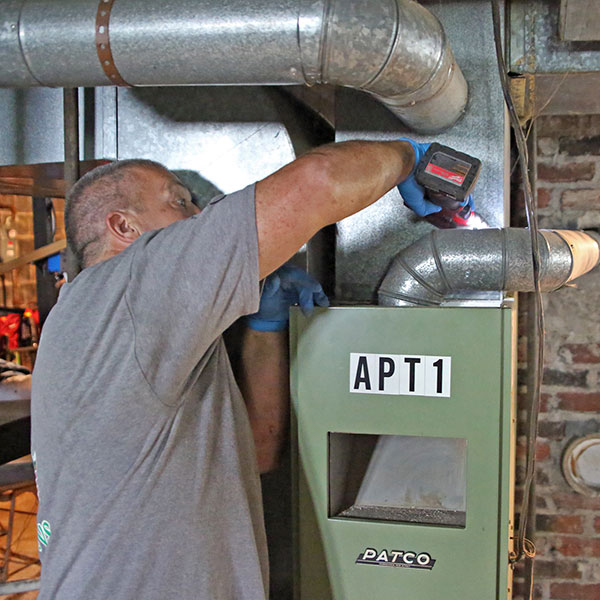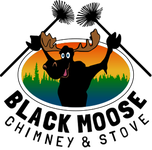
The furnace flue is the often forgotten part of your chimney and many consumers are surprised when serious problems are found within it. Years of service can take their toll on the flue especially when you consider the extreme conditions the flue typically endures. Here is a brief overview of what your furnace flue must do and the challenges it faces:
Oil Boilers/Furnaces: Oil exhaust has a very high sulfur content, and when combined with moisture forms sulfuric acid which can very quickly damage and destroy most flues. Clay flues will tend to flake apart (called spalling), joints erode, holes form, and serious carbon monoxide problems become much more likely. The moisture itself can come from rainwater entry into an uncapped flue, or the moisture can be a byproduct of combustion in a high efficiency furnace or propane appliance. In the latter case the moisture condenses in the flue before being exhausted outside either due to a cold chimney, infiltration air leaks, or an uninsulated/poorly installed liner. Whatever the source, this moisture/sulfur combination can create havoc in as little as a year. Some furnaces simply MUST have a good quality stainless liner installed to function safely. In one recent case we came across a high efficiency System 2000 oil furnace which was installed without a proper stainless liner (which goes against the installation requirements) and one year later it had destroyed the flue to a point where the furnace would no longer run and posed a serious threat to the occupants of the home. The System 2000 is a GREAT oil system, but must be installed properly. Please consult your local dealer or Energy Kinetics for more information.
Propane Appliances: In addition to rainwater entry as described above, the additional problem propane appliances have is the inherent moisture content of propane itself – propane burning produces a lot of water in the exhaust. This water when vented into a traditional masonry chimney, especially one outside the envelope of the home, will condense and create many similar deterioration issues. Spalling, erosion, etc can occur to a point where the flue can no longer contain the products of combustion. Insulation is sometimes required when relining a propane flue to keep the exhaust gases warmer to avoid condensation within the chimney.
So what should you do to protect yourself?
- 1. Have your flue checked regularly, as part of your routine maintenance. We, as well as many other certified sweeps, will gladly check the flue condition when we’re on site to sweep a wood flue. (BTW, the same service guidelines apply to oil and gas flues: Checked once a year, cleaned as needed.) Often we will want to clean, inspect, and scan the flue if we’re on site for the first time to get a good baseline. After that, we’ll check it during your yearly service to keep track of it’s condition.
- 2. Install a cap!!! A $70 cap can save you thousands of dollars of repairs down the road, as well as prevent injury to you and your family. If you are the DIY type, you can get a cap of your own and install it. It’s not that hard. My only suggestion is make sure the cap is a minimum of 316 stainless steel, otherwise it will just fall apart in the acidic environment of an oil flue.
- 3. Line your flue if necessary. In addition of a possible bump in efficiency of your appliance, you will have a much safer chimney. Be sure to insulate if necessary.
- 4. If you’re replace your furnace or boiler with a newer unit, remember that often a proper inspection of your chimney is required by code. Simply looking up the flue is not nearly enough.
So there it is folks. As always, feel free to contact us via the web or phone if you have any questions, and please enjoy the nice weather we’re finally having!


